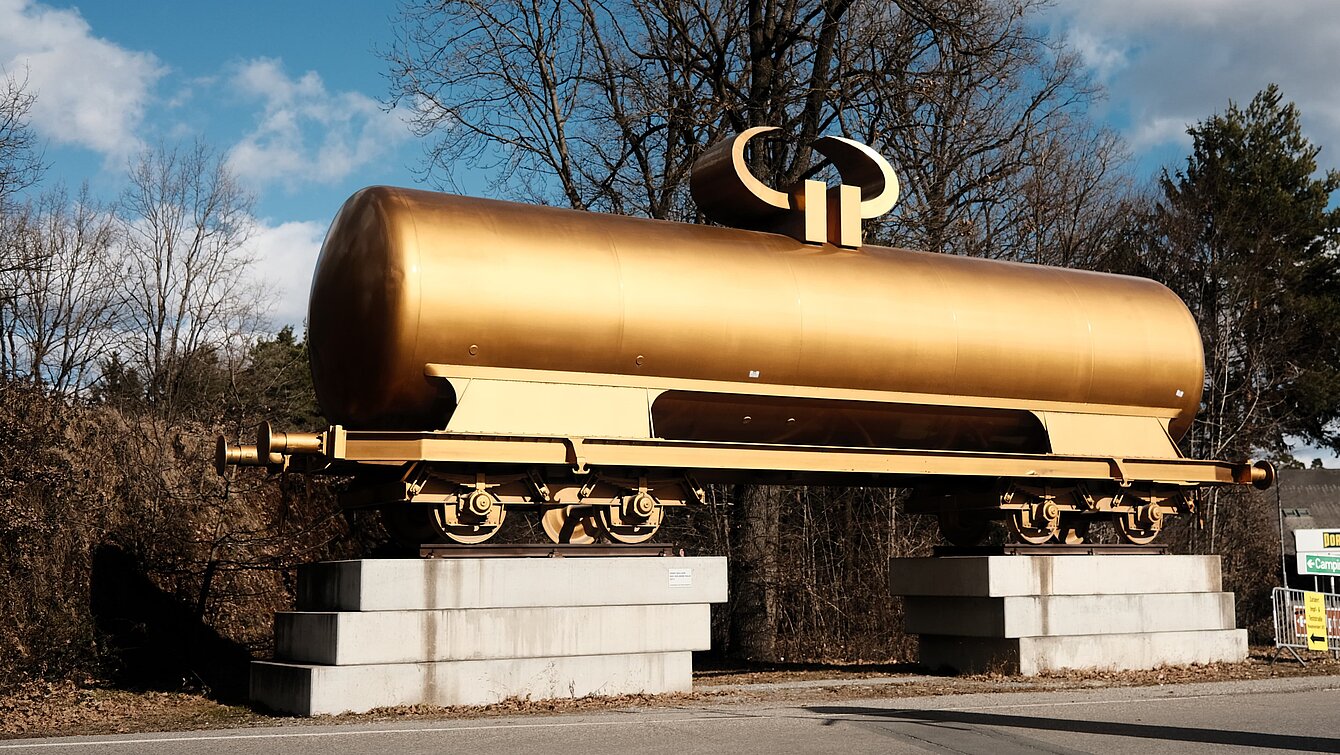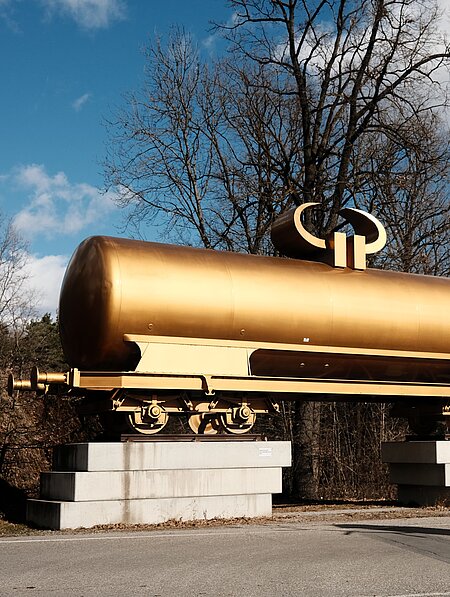In its reference to the railway as the first industrial means of transport, this work points to the beginnings of our communication and information age. At the same time, because of its potential mobility, the train can be read as symbolising the utopian vision of a beautiful life. Conceptually, Hollein covers the analogue medium of transport for mineral oil, ‘liquid gold’, with precious gold paint. The work’s title together with its horn-like structure refer to the idol made by the Israelites in the Old Testament. If we look more closely, this structure can also be interpreted as a sideways euro currency symbol and so a reference to the capitalist game of free market forces.
Das Goldene Kalb [The golden Calf]
Hans Hollein, 2011


Image Credits
Author
Elisabeth Fiedler
Location on map
Position 66
Owner
On loan from private owner
Artist biography
Hans Hollein
Show all
About the sculpture
In 2011, the artwork „Das Goldene Kalb“ (the golden calf) by universal artist Hans Hollein, was exhibited in front of the Neue Galerie as part of his solo show. In 2013, the sculpture was transferred to the Austrian Sculpture Park.
The art work is based on technical revolution in reference to the importance of speed and machinery of the futurists and cubists and thus reflects motion and change in space and time through technology and materiality. It’s not alone the interlocking of materials such as light, colour, substance and their consistency through scientific knowledge but also speed, which incorporates unimaginable dynamics and colludes with the repositioning of space and time.
Hollein knowingly cites the first technical means of transportation, the train, which is controllable and comprehensible by prefabricated rails but at the same time provides and opens utopian impulses for new life forms. The connection of art and craft, art and technics or art and industry, developed through Bauhaus and De Stijl, finds a further culmination in the manifest declaration given by Hollein in 1968 ‘Everything is Architecture’, which, similar to the statement by Joseph Beuys in 1967 ‘Every Person is an Artist’, demands social change as well as self-responsibility of the human kind.
When Hans Hollein declares automobiles as well as this railway waggon as art, he does not condemn or judge particular disciplines but democratises them. Parallel to this, he examines ideological, material, religious, ritual, idealistic and mercantile values and confronts us with them in character of a railway waggon representing its potential of movement rather than its dynamics per se, as a waggon is being transported, therefore carried along.
The railway waggon, a well-known object, is isolated from its usual environment and thus constructs a new reality. The artwork, built in times dominated by information- and communication technology, refers intentionally to the technical beginning, therefore into the past. At the same time it refers to an utopic vision of a beautiful life through its readiness for dynamics, thus to the future. However, despite its potential to move, which is nothing but an analogy of placelessness, it is located in the present.
As part of this artwork, Hollein covers the waggon for mineral oil transportation, the ‘liquid gold’, in the colour Gold. That way Holleins phrase ‘All construction is cultic’ (which he coined through his oversized waggon as a monument for the victims of the Holocaust in the year 1963) oscillates between sacred symbolism and pop, highest value and virtual reality, archaic and elusive manners, especially considering the context of the title pertaining to the Old Testament and the quote of the biblical idol.



















